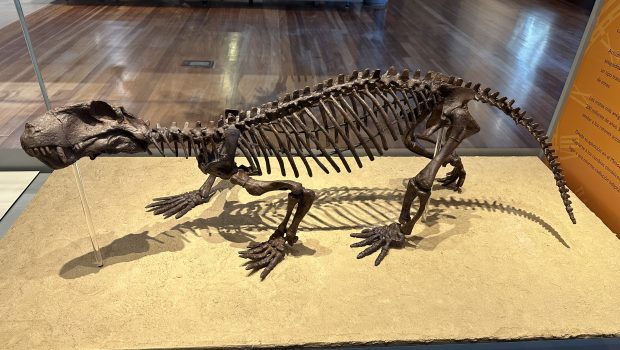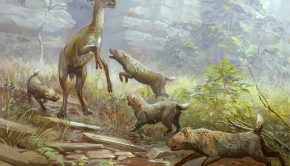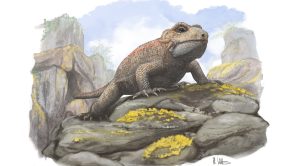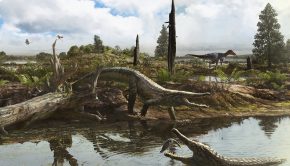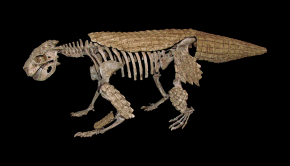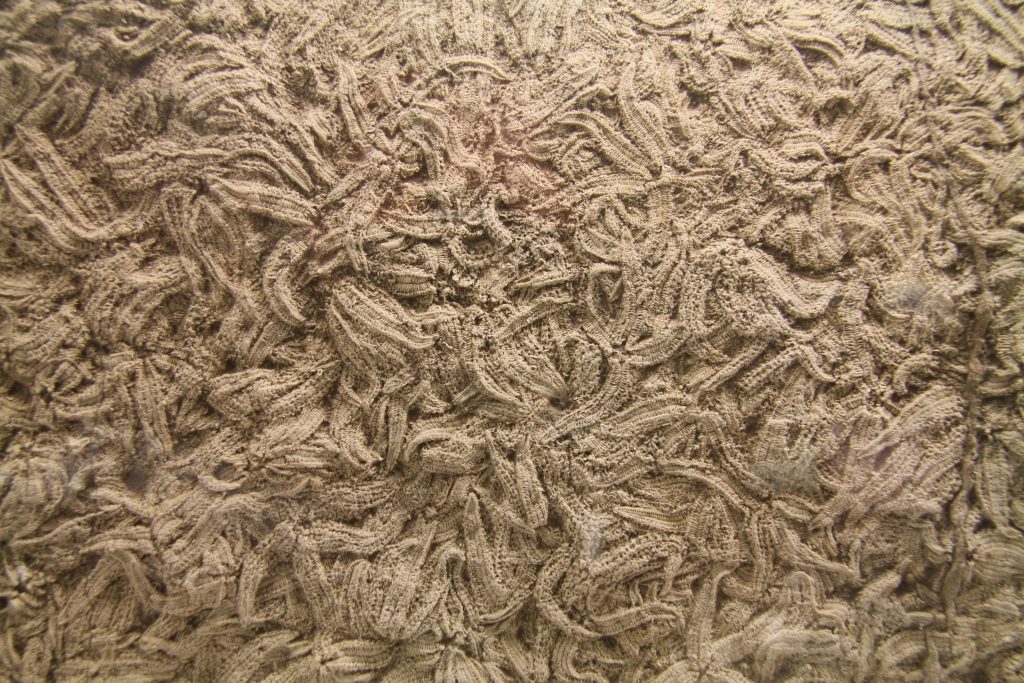The Evolution of Predatory Synapsids
Before the rise of reptiles in the Mesozoic, synapsids dominated. Synapsida is comprised of all living and extinct mammals, and all species more closely related to mammals than to modern reptiles, birds, or amphibians. Originating in the Carboniferous about 320 million years ago, and then flourishing in the Permian (299 to 252 million years ago), synapsids expanded into every corner of Pangea. Many sported extraordinary display structures, ranging from the large sails of Dimetrodon and Edaphosaurus that resembled a half-moon emerging from their backs to the baroque skull ornamentation of Burnetia and even to the hypertrophied, walrus-like tusks of Dinodontosaurus. Most lineages of synapsids were predatory, several of which grew to the size of bears and were formidable apex predators in their environments. Understanding how different predatory lineages took over from one another and how each lineage adapted to subdue prey, have long been major topics of synapsid research. A new study by the University of Bristol’s Dr Suresh Singh and colleagues has attempted to tackle these topics using a combination of lower jaw shape and function analyses, providing new insights into the evolution of predatory synapsids and their various environmental roles and impacts.
The lower jaw, an anatomical region predominately dedicated to feeding, was subject to several changes throughout the evolution of synapsids. A multitude of adaptations characterise the evolution of this region, from reinforcing the front of the jaw to growing an upward-directed flange termed a ‘coronoid process’ near the back of the jaw, but none more so than the enlargement of the front-most bone, the dentary, and reduction in size of all others. In the mammals, the only living group of synapsids, this has been taken to an extreme with the dentary comprising the entirety of the lower jaw while all other elements instead make up part of the inner ear or have been completely lost. In order to objectively capture the remarkable amount of variation of the lower jaw throughout predatory synapsids, Singh and colleagues used geometric morphometrics, a technique involving setting landmarks on photos or digital models that quantitatively captures variation in shape. Since changes in shape are associated with changes in functional performance, the researchers then measured several biomechanical traits like biting efficiency in synapsid lower jaws. By combining the results of their shape and function analysis, they were able to identify the unique jaw shape each predatory lineage evolved for their dedicated feeding behaviours.
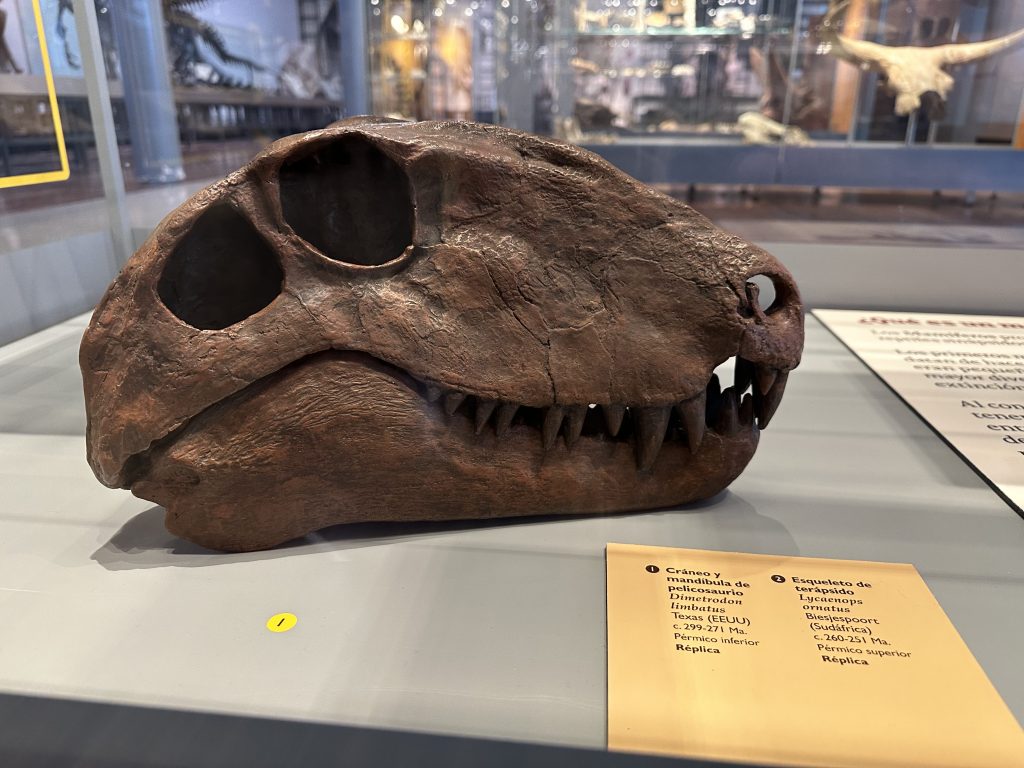
The researchers identified three general categories of predatory synapsids. The first is made up of ‘raptorial specialists’: synapsids that were likely gripping comparatively smaller prey such as lizard-sized animals and fish. Some of these raptorial specialists had exceptionally gracile jaws, best adapted for hunting insects and other invertebrates that had diversified across our planet long before the synapsids. These raptorial specialists were the first of the three general categories to be explored by synapsids and predominately consisted of many early members often called “pelycosaurs” (a technically invalid classification). Among these “pelycosaurs” are the sphenacodontians, a group which includes the iconic, sailed Dimetrodon that is often confused for a dinosaur; the eothyrids, a group of very primitive lizard-like synapsids; the ophiacodontids, which somewhat resemble a sail-less Dimetrodon and have historically been erroneously argued to be aquatic; and finally the varanopids (not to be confused with the monitor lizard family Varanidae), which make up the majority of the members of the insect-eating specialists with particularly gracile lower jaws. These groups thrived during the end of the Carboniferous and the Cisuralian (=early Permian). By the Guadalupian (=middle Permian) these “pelycosaurs” would be driven to extinction by a combination of major environmental changes and competition with a new group of synapsids: the therapsids.
The rise of the therapsids in the Guadalupian and Lopingian (=late Permian) signalled a major transition in the makeup of Palaeozoic environments. For the first time in Earth’s history, environments were dominated by herbivorous synapsids, especially by the tapinocephalians and dicynodonts, famous for their heavily fortified dome heads and tusked beaks, respectively. Several lineages of predatory therapsids evolved to hunt these new herbivores, which were much more abundant and larger than their ecological predecessors. The adaptations these carnivorous therapsids evolved geared them towards the second general category discovered by Singh and colleagues: ‘speed specialists’. Many different types of therapsids slot into this category, highlighting how wide-spread and effective rapid biting and gripping was for subduing the new array of herbivores. These predatory therapsids include: the most primitive group, the biarmosuchians, many of which are known for the bizarre ornamentation decorating the roofs of their skulls; the dinocephalians (excluding the herbivorous tapinocephalians), whose predatory capabilities are exemplified by the enormous and terrifying Anteosaurus that has a skull reminiscent of that of a fantastical dragon; and the therocephalians, one of the most diverse groups of predatory therapsids that generally resembled wolves and jackals. Interestingly, many members of the latter group, the therocephalians, had more gracile jaws than other speed specialists that likely facilitated a greater emphasis on rapid, light attacks while hunting. Even with these adaptations, these therapsids could not take on the very largest herbivores of their time, including not only the biggest Permian dicynodonts, but also the hippo-sized pareiasaurs, a group of primitive reptiles adorned with scutes like those of crocodiles.
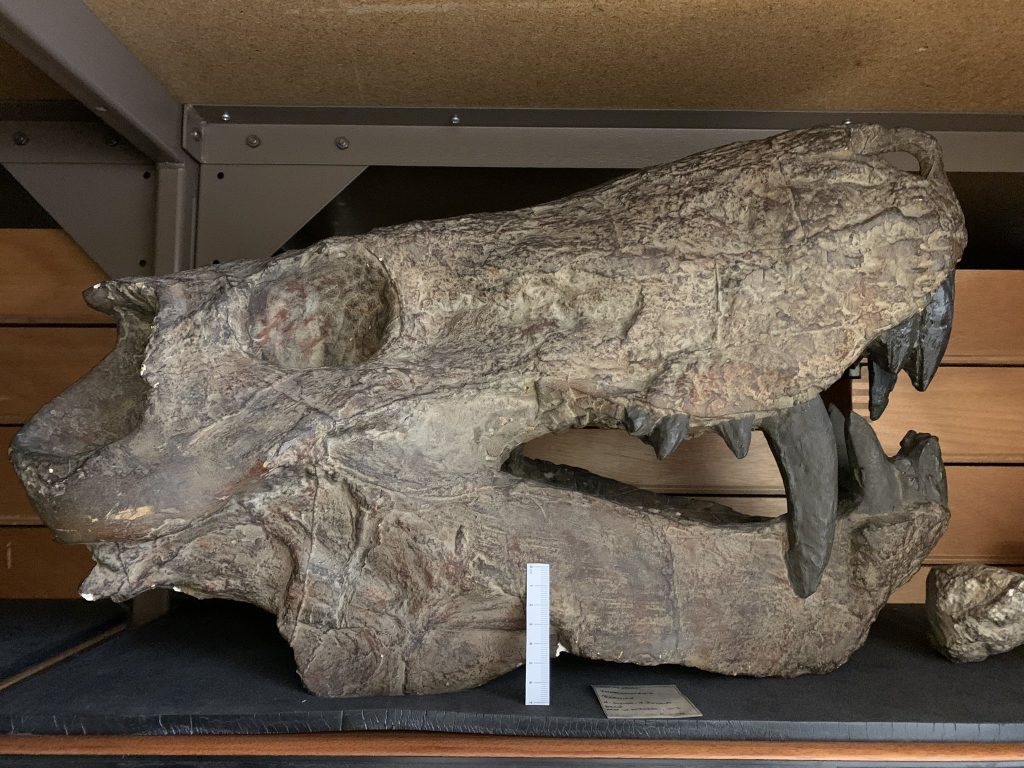
Extremely large herbivores, such as pareiasaurs, posed a formidable threat to any predator looking for a filling meal, driving some predatory lineages to evolve deep, robust jaws that anchored powerful biting muscles, enabling these predators to inflict tremendously damaging wounds. These predatory therapsids comprise the third and final category discovered by Singh and colleagues: ‘power shearers’. Many therocephalians comprised this category, but the most noteworthy members are the gorgonopsians. Named after the gorgons from Ancient Greek mythology, these predators were specialised for shearing and ripping chunks of flesh from their prey and might only have required a few devastating bites to kill a prey animal even larger than they were, a hunting technique modern lions and tigers excel at. In their heyday, Gorgonopsia would have likely represented the predators most specialised for hunting, tackling, and killing huge herbivores and they would not be matched in this regard until the rise of giant predatory reptiles in the Upper Triassic. Fascinatingly, our closest relatives in the Permian, the early cynodonts that resembled badgers, also make up a sizable chunk of the power shearers category, but unlike their considerably larger gorgonopsian contemporaries, would have focused on smaller prey. This therapsid domination would not last however, as their zenith would come to a close shortly after giant gorgonopsians and early cynodonts had taken centre stage of Pangea’s environments.
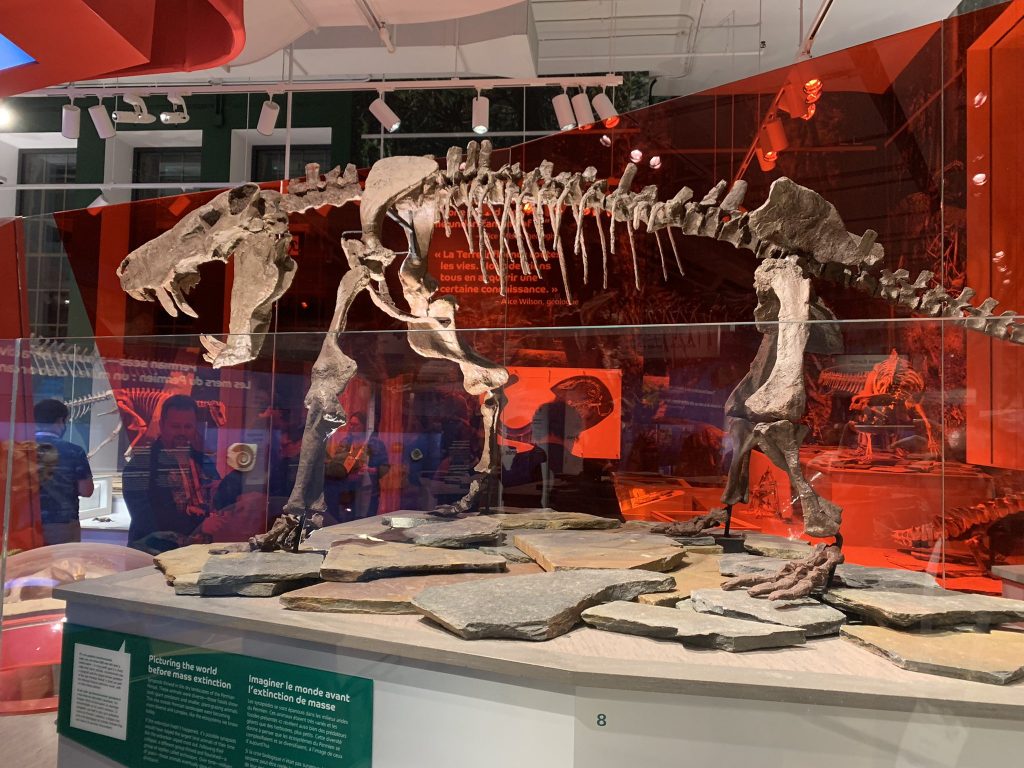
The end-Permian Mass Extinction decimated the therapsid dominated environments, leaving very few survivors to cross over into the Lower Triassic. A notable find by Singh and colleagues is that the predatory therapsids of the beginning of the Triassic were substantially smaller than their end-Permian competitors. The lack of prey needed to sustain large predators like the gorgonopsians likely played a pivotal role in their demise. However, this did not spell the end of large terrestrial predators. Now that there was room for large predators in the new environments of the Triassic, large, ferocious reptiles took over. Reptiles would explode in diversity throughout the Triassic, giving rise to the iconic dinosaurs, pterosaurs, and marine reptiles. It was the extinction of the specialised predatory synapsids that ushered in the awe-inspiring and captivating predatory dinosaurs and crocodilian ancestors, key characters in the ‘Age of Reptiles’.
To better understand the details behind the science conducted by Singh and colleagues, I asked the lead author of the new study several questions about synapsids and the brilliant methods used to study their evolution.
What is it about synapsids that captured your interest and made you want to study them?
I think it’s that they’ve been oddly neglected despite being part of our, humanity’s wider evolutionary history and the key players in some of the major events for life on Earth. Non-mammalian synapsids were the rulers on land before the dinosaurs, being among the first large tetrapods to evolve when animals first began to properly colonise the land, and among the first to become specialised herbivores or carnivores. Plus, they’re pretty weird. They achieved great diversity and were so successful for such a long time (almost 100 million years), but they’re still such an enigmatic group! There’s still so much to learn about them despite 200 years of palaeobiological study.
What do you think are some of the big mysteries surrounding synapsids, and how can we solve them?
Well, there’s a lot still to learn about synapsids. We still don’t know how many of them are related to each other. Untangling their phylogenetic relationships is an area of much current research. To give you an idea of how tentative some of these relationships are, a recent study by Ford and Benson (2020. Nature Ecology & Evolution) suggested that some or all varanopids may not even be synapsids!
Plus, many of their features remain a big mystery because non-mammalian synapsids are unlike anything alive today in many respects – they span the transition from more reptilian to more mammalian forms; they’re ‘inbetweeners’ – not quite typical reptiles, but not yet mammals. So, were particular taxa more like reptiles or mammals? Or were they doing something unique? When and how did more mammalian traits like hair or endothermy (‘warm-bloodedness’) emerge? These are the mysteries that interest me.
What are some of your favourite recent discoveries in synapsid science that has changed the way you think about them?
I like recent papers by Bishop et al., (2024. The Anatomical Record) on their limb anatomy that highlights the challenge of deciphering synapsid trait evolution. Their comparative anatomical study found that non-mammalian synapsids probably moved in a very different way to both modern mammals (as expected) and ‘reptiles’ (quite unexpected) – they were doing their own thing.
New work by Kammerer (et al. 2023. Current Biology) and Brant and Sidor (2023. Journal of Vertebrate Paleontology) has revealed new complexity among the synapsid-dominated faunas of Permian Africa, demonstrating very interesting patterns of ecological succession among synapsid carnivores as environmental conditions deteriorated towards the end of the Permian. The recent finding of an otherwise Russian endemic gorgonopsian genus (Inostrancevia) In Southern Africa initially alongside and then after the extinction of native African gorgonopsians suggests some intriguing niche dynamics between these ancient predators.
I also quite liked the unveiling of Lisowicia bojani (Sulej & Niedźwiedzki, 2019. Science), the largest non-mammalian synapsid yet discovered. The fact that this dicynodont dates from the end of the Triassic (~208-201 million years ago) exemplifies the extraordinary success of these animals. The dicynodonts existed for roughly 60 million years (almost the entire span of Cenozoic mammalian evolution), survived multiple mass extinction events even beyond the one that ended synapsid faunal supremacy on land, and grew to rival the contemporaneous, first large dinosaurs in size. Rather than minor relics of the Permian, Triassic forms were still major components of terrestrial faunas.
Why did you decide to use a combination of both shape and function analyses to tackle these research topics?
There are pros and cons to using approaches that focus on either anatomical shape or function, but while the shape and function of animal morphology is often closely linked, it is not always as differences in jaw musculature can generate different functionality despite similar jaw shapes and vice versa. Using a combination of methods that more distinctly emphasised either the ‘shape’ or ‘function’ of the jaw offered greater confidence that changes in morphology likely reflected changes in function and so trophic behaviour and diversity.
What were some major roadblocks you encountered when carrying out your analyses and how did you overcome them?
Many of the taxa from our study interval were described in the early 20th Century, with little work on them since. Using these sources to collect data, particularly appropriate images of the jaw for the geometric morphometric analyses was quite challenging. Some of the reconstruction illustrations and photos were fantastically detailed, others not so much… Reaching out to other researchers for help sourcing images and papers helped a great deal with this, especially when it came to the Russian and Chinese taxa.
Keeping up to date with the taxonomy of many taxa was also something that we had to take care with as there was a tendency among early palaeontologists to describe each new fossil specimen as a new distinct taxon and more recent study of these taxonomic designations has shown that often many of these supposedly different taxa are actually synonymous. Thankfully, there’s been steady progress on this in the last decade and these papers alongside a little detective work to track the history of different taxa allowed us to overcome this issue.
What do you recommend prospective palaeontologists do to learn these phylogenetic comparative methods that are critical to investigating evolution?
Just practice. It takes time to learn how to apply these methods and often a fair bit of time to actually understand what they do, but by trying them out again and again, tweaking different things each time, we can soon develop a pretty good working knowledge of these methods. Also, look at online tutorials or in the methods and supplementary information of published literature for information on how to run through these analyses, and give them a go. Trial and error is the key.
Hady George is a palaeontology PhD student at the University of Bristol researching the jaws of the earliest tetrapods among other things, and seemingly always has a pop science book somewhere in his bag.
Cover image: Cast of a skeleton of the small gorgonopsian Lycaenops at the National Museum of Natural Sciences, Madrid, Spain.

